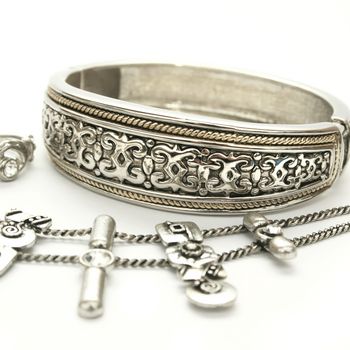
Silver is used in the production of numerous decorative items ranging from jewelery to accessories to musical instruments and fine cutlery; its bright color makes this metal particularly attractive for such applications. The most popular alloys consist of silver and copper with typical millesimal fineness of 825, 925 (Sterling), or even 935 parts silver per thousand by mass. Cu is added to improve the strength and workability of the material.
Though silver is a precious metal, it has a strong tendency to oxidize on the surface, discoloring its bright, glossy face with a dark, dull stain. This effect, called tarnishing, also occurs in copper-alloyed silver.
Therefore, the focus of much R&D has been to improve silver’s tarnish resistance through the addition of small amounts of a variety of elements, including precious metals such as Palladium and semimetals like Germanium, among others. While this vast range of possible alloys makes analyzing the silver challenging, X-ray fluorescence instruments allow for quick, accurate, non-destructive analysis. Fig. 2 shows sections of spectra of various such alloys.
FISCHERSCOPE® X-RAY XAN® 250 instruments are optimally suited for visualizing even the subtlest differences in silver alloys. They allow precise purity measurements as well as the exact determination of tiny amounts of tarnish-resistant materials and other alloy components. For more information please contact your local FISCHER representative.